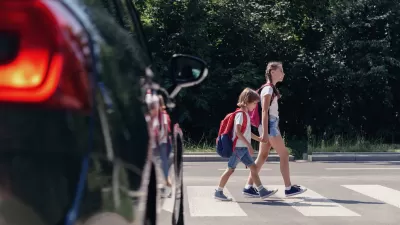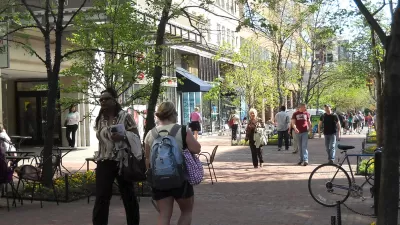An urban planning critic says the U.S. should build streets for people to live on, and roads to move traffic quickly.

Wherever Charles Marohn travels in America, he finds a similar type of road, lined with strip malls, fast-food joints, gas stations, car dealers and dying malls.
Marohn calls these arterial roads “stroads” — a mix of a neighborhood street, where people want to live and shop, and a road, which is designed to move traffic quickly between two places. Stroads are trying to do two things at once, he says, and failing at both.
They repel pedestrians and bicyclists. But they also fail to move traffic quickly the way a road should, says Marohn, a civil engineer turned writer and speaker, and the founder of the nonprofit Strong Towns, which advocates for more livable and resilient urban development. Cars can rev up to 45 mph or so but frequently must brake for red lights, a frustrating and dangerous stop-and-go.
He blames traffic engineers for ignoring the way roaring traffic tends to decrease the value of adjacent neighborhoods and commercial districts, making them less safe and attractive to people who want to reside, stroll, shop or dine in calmer surroundings. That, he says, destroys the economic value of land and wastes public funds spent on ill-conceived roads.
FULL STORY: ‘Stroads’ Aren’t Streets. They Aren’t Roads. And They Don’t Work.

Maui's Vacation Rental Debate Turns Ugly
Verbal attacks, misinformation campaigns and fistfights plague a high-stakes debate to convert thousands of vacation rentals into long-term housing.

Planetizen Federal Action Tracker
A weekly monitor of how Trump’s orders and actions are impacting planners and planning in America.

In Urban Planning, AI Prompting Could be the New Design Thinking
Creativity has long been key to great urban design. What if we see AI as our new creative partner?

King County Supportive Housing Program Offers Hope for Unhoused Residents
The county is taking a ‘Housing First’ approach that prioritizes getting people into housing, then offering wraparound supportive services.

Researchers Use AI to Get Clearer Picture of US Housing
Analysts are using artificial intelligence to supercharge their research by allowing them to comb through data faster. Though these AI tools can be error prone, they save time and housing researchers are optimistic about the future.

Making Shared Micromobility More Inclusive
Cities and shared mobility system operators can do more to include people with disabilities in planning and operations, per a new report.
Urban Design for Planners 1: Software Tools
This six-course series explores essential urban design concepts using open source software and equips planners with the tools they need to participate fully in the urban design process.
Planning for Universal Design
Learn the tools for implementing Universal Design in planning regulations.
planning NEXT
Appalachian Highlands Housing Partners
Mpact (founded as Rail~Volution)
City of Camden Redevelopment Agency
City of Astoria
City of Portland
City of Laramie





























